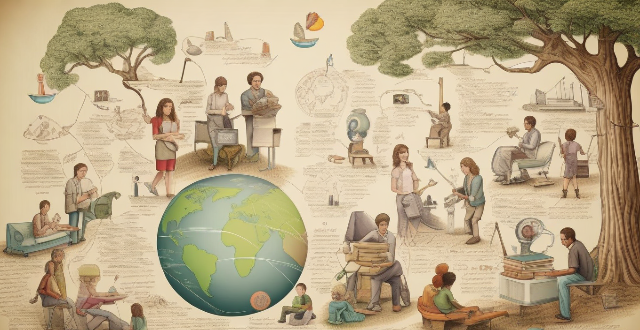Incorporating multicultural education into the curriculum is crucial for fostering understanding and respect for diverse cultures. Teachers can achieve this by integrating culturally diverse literature, teaching through a global lens, promoting cultural sensitivity, encouraging critical thinking, and creating a welcoming learning environment that accommodates all learners. By doing so, they prepare students for a diverse and interconnected world.

How Can Teachers Effectively Incorporate Multicultural Education into Their Curriculum?
Multicultural education is an essential aspect of modern teaching practices. It fosters understanding, respect, and appreciation for diverse cultures, traditions, and perspectives. Here's how teachers can effectively incorporate multicultural education into their curriculum:
1. Infuse Multicultural Content Across the Curriculum
a. Integrate culturally diverse literature and resources
- Reading Lists: Include books that reflect different cultures, histories, and perspectives.
- Classroom Materials: Use posters, artwork, and artifacts from various cultures to decorate the classroom.
b. Teach through a global lens
- Historical Events: Discuss historical events from multiple viewpoints to understand their impact on different cultures.
- Science & Math: Incorporate examples from different cultures in science experiments or mathematical problems.
2. Promote Cultural Sensitivity and Awareness
a. Address stereotypes and biases
- Open Discussions: Encourage students to share their thoughts and challenge stereotypes in a respectful manner.
- Bias Training: Conduct activities that help students recognize and overcome their biases.
b. Celebrate diversity
- Cultural Days: Organize events where students can share their culture with the class.
- Guest Speakers: Invite speakers from different backgrounds to share their experiences and knowledge.
3. Encourage Critical Thinking and Open Dialogue
a. Promote open dialogue
- Discussion Groups: Facilitate discussions where students can express their opinions freely.
- Debates: Organize debates on topics related to multiculturalism to foster critical thinking.
b. Teach media literacy
- Media Analysis: Teach students how to analyze media messages critically and identify biases.
- Digital Citizenship: Educate students about responsible online behavior and respect for diverse viewpoints.
4. Create a Welcoming Learning Environment
a. Make accommodations for all learners
- Accessibility: Ensure that materials are accessible to students with disabilities.
- Language Support: Provide language support for English Language Learners (ELLs).
b. Foster a sense of belonging
- Inclusive Language: Use inclusive language that respects all genders, races, and cultures.
- Safe Space: Create a safe space where students feel comfortable expressing themselves without fear of judgment.
By implementing these strategies, teachers can effectively incorporate multicultural education into their curriculum, preparing students for a diverse and interconnected world.